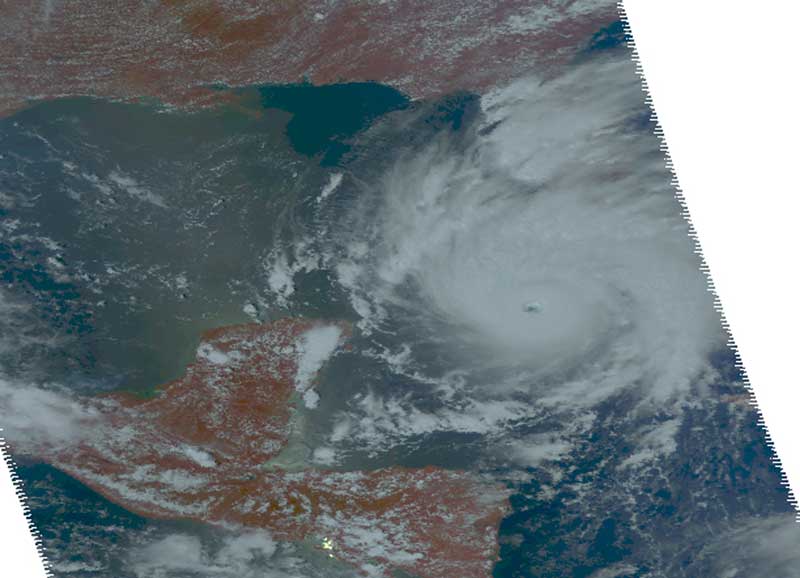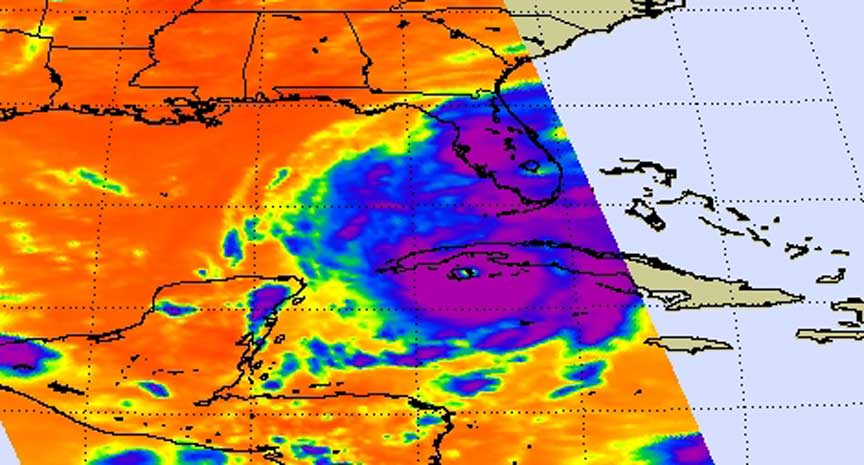Thanks to these predictions, the city of New Orleans was evacuated, because damage to it could cause a lot of damage, and the administration prefers that it be limited to property only

US President George W. Bush warned residents of the Gulf Coast on Sunday that Hurricane Gustav was headed their way, and New Orleans Mayor Ray Nagin urged residents to evacuate. Meanwhile, forecasters said that Hurricane Gustav will cause $29 billion worth of property damage when it passes through the Gulf of Mexico. The software, developed by the Federal Emergency Management Agency (FEMA) and the National Building Sciences Institute, also predicts that 4.5 million people live in the path of the storm, which will cause the destruction of approximately 60 buildings, including 170 hospitals and over 1,100 police and fire stations.
NASA says that today, Monday, the hurricane is expected to land in Louisiana, and that New Orleans officials have decided to turn around and lock down the city. In addition, about 3,000 soldiers of the National Guard were stationed in the city for the purpose of guarding the property of those leaving.
Yesterday, August 31, the winds in the areas of Gustav's influence reached a speed of about 200 km/h. Gustav is considered a category 3 hurricane on the Stauffer-Simpson scale. During the next few hours it is expected to strengthen to Category 4. On Sunday morning, the center of the storm was positioned about 500 kilometers southeast of the mouth of the Mississippi River. The storm is moving towards the northeast at a speed of about 20 km/h (the differences in the position of the center of the storm every hour). The storm is expected to continue in this direction for the next two days. In the eye of the storm, US Air Force hurricane hunters measured an atmospheric pressure of 960 millibars. If it continues on this path, it will cross the northern part of the Gulf of Mexico on Monday at noon local time.
The National Hurricane Prediction Center expects high waves of 6-13 meters above the maximum sea level (surges) in areas east of the eye of the storm, while those west of the eye of the storm will suffer from waves only 30-90 centimeters high. Gustav is expected to drop an average of 15-30 inches of rain in parts of Louisiana, southern Mississippi, and southern Arkansas, and in some areas as much as 50 inches by Wednesday morning. Considerable amounts of rain are also expected in the Keys and South Florida. Scattered tornadoes are also possible along the Gulf Coast.
This infrared photo was taken by the AIRS - Atmospheric Infrared Sounder device on board NASA's Aqua satellite. The photo was taken on August 30 at 19:05 GMT (22:05 Israel time). Above you can see the cloud cover that extends over Cuba and Florida, as well as the eye of Gustav's storm, which indicates that this is a powerful storm. The forces of the hurricane extend to a distance of about 80 kilometers from the center, and the winds can reach speeds of 300 km/h. The infrared image shows the temperature of the cloud tops or the surface of the earth in the cloud-free areas. The low temperature - in purple - is the one that prevails in the peaks of the cold clouds. AIRS data provides a XNUMXD map of atmospheric temperature, water vapor and clouds, all to aid forecasters.

The infrared radiation used in AIRS does not penetrate through the clouds, and when there are no clouds the signals come from the ocean water, then you see them in orange and red colors, the warmer the water.
And in the meantime, a new storm developed - Hanna, HANNA, which will mainly affect the Bahamas, Turks and Caicos Islands, but may also damage the eastern coast of the USA. The storm was also supposed to head to the Gulf of Mexico, but high air pressure diverted it to the east and, as mentioned, it is expected to weaken but damage the shores of the Atlantic Ocean.

One response
Wait... and why did 3000 soldiers stay in the city to guard the property? O_O
Will they not be damaged by the storm?